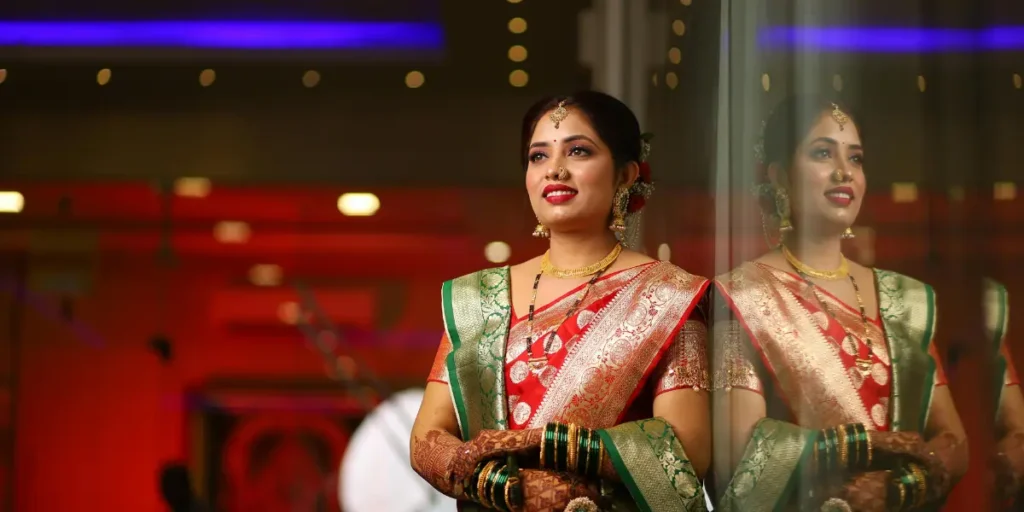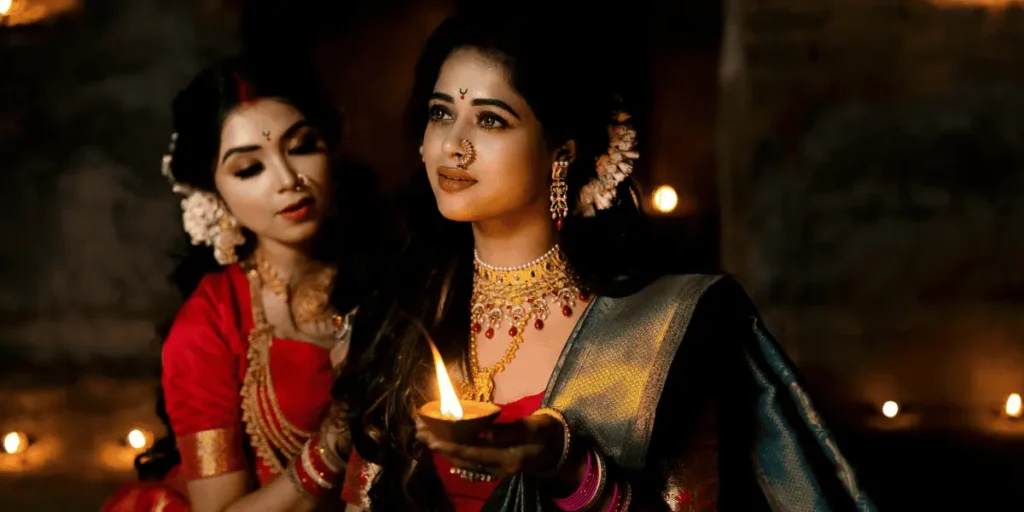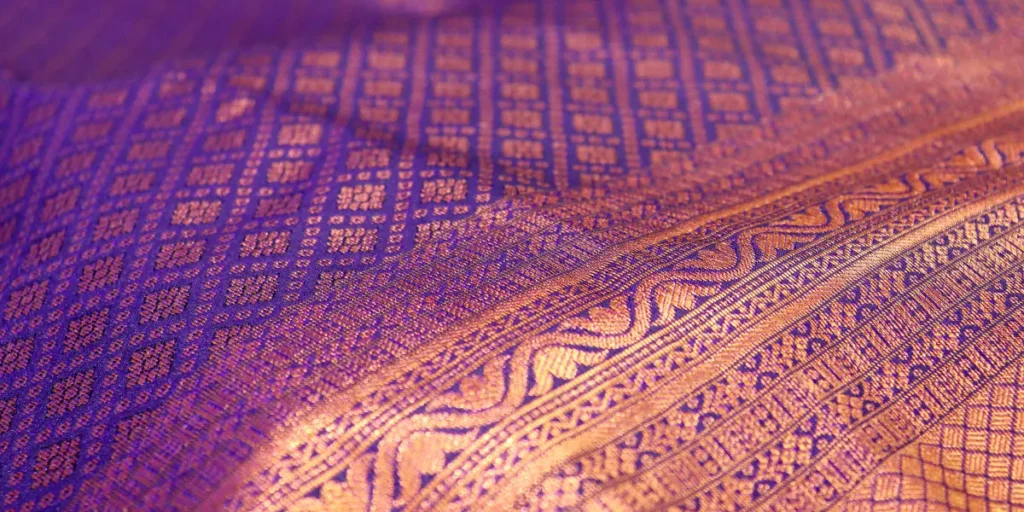India is a land of timeless traditions, and few things capture the essence of its heritage better than silk sarees. Known for their luxurious feel, vibrant hues, and intricate craftsmanship, silk sarees are not just garments but a canvas that tells the story of India’s culture and artistry. The rich diversity of silk sarees in India is truly unparalleled, with every region offering its own unique weave, fabric, and design.
In this article, we will explore the fascinating history, types, and cultural significance of Indian silk sarees, along with tips to care for and style them.

The History of Silk in India
Origins of Silk Production in India
The journey of silk in India dates back thousands of years to the Indus Valley Civilization. While silk originally came to India through trade with China, it quickly evolved into a flourishing domestic industry. Over time, silk became an integral part of Indian rituals, festivals, and celebrations, revered for its elegance and luxurious appeal.
How Silk Became a Symbol of Elegance and Status
In ancient India, silk sarees were reserved for royalty and nobility. The intricate weaving techniques, combined with precious materials like gold and silver threads, made silk sarees a symbol of wealth and sophistication. Today, silk sarees continue to embody elegance, being the preferred attire for weddings, festivals, and special occasions.
Types of Silk Sarees in India
Kanjeevaram Silk Sarees: The Pride of Tamil Nadu
Kanjeevaram sarees are synonymous with grandeur. Known for their durability and vibrant colors, they feature heavy borders and intricate designs inspired by temple art and mythology. Made from pure mulberry silk, Kanjeevaram sarees are a must-have for weddings and festive occasions.
Banarasi Silk Sarees: The Royal Legacy of Varanasi
Banarasi silk sarees are a testament to India’s rich weaving heritage. Famous for their elaborate zari work, floral motifs, and Mughal-inspired patterns, these sarees are perfect for formal occasions. Their luxurious texture and regal charm make them a popular choice among brides.
Mysore Silk Sarees: Karnataka’s Luxurious Weave
Known for their subtle elegance, Mysore silk sarees feature rich, solid colors and minimalistic designs. The smooth texture and lightweight nature make them ideal for women who prefer understated sophistication.
Assam’s Muga Silk: The Golden Thread
Muga silk, exclusive to Assam, is often referred to as the “golden thread.” Known for its natural sheen and durability, Muga silk sarees are considered heirlooms, passed down through generations.
Paithani Silk Sarees: Maharashtra’s Handwoven Marvel
Paithani sarees are renowned for their intricate handwoven motifs, including peacocks and lotus flowers. These sarees often feature bright hues and contrast borders, representing a perfect blend of tradition and craftsmanship.
Tussar Silk Sarees: The Wild Silk from Eastern India
Tussar silk sarees are made from natural silk produced by wild silkworms. The fabric has a rich texture and a unique gold-toned sheen, making it ideal for casual and semi-formal wear.
Baluchari Silk Sarees: Bengal’s Storytelling Drapes
Baluchari sarees are famous for their narrative designs, often depicting scenes from mythology and folklore. The intricate pallu designs make these sarees a wearable piece of art.
Patola Silk Sarees: Gujarat’s Double Ikat Tradition
Patola sarees are celebrated for their geometric patterns and vibrant colors. The double ikat weaving technique makes them one of the most complex and prestigious sarees in India.
Eri Silk: The Sustainable Silk from the North East
Eri silk, also known as “Ahimsa silk,” is prized for its eco-friendly production process. Soft and durable, Eri silk sarees are perfect for those who value sustainability and comfort.

Regional Techniques and Motifs
The Unique Weaving Techniques of Indian Silk Sarees
Indian silk sarees showcase diverse weaving techniques, such as double ikat, jacquard, and brocade. Each region brings its own flavor, blending tradition with innovation to create masterpieces.
Popular Motifs and Patterns in Indian Silk Weaves
Motifs like paisleys, peacocks, and floral patterns dominate silk sarees. Temple borders, geometric designs, and narrative depictions add to their uniqueness, reflecting India’s artistic heritage.
Occasions to Wear Silk Sarees
Weddings: Celebrating Love with Opulent Silk
Silk sarees are a staple at Indian weddings, with brides often choosing rich weaves like Kanjeevaram or Banarasi sarees for their special day.
Festivals and Religious Ceremonies
Festivals like Diwali, Durga Puja, and Pongal are incomplete without traditional silk sarees. Their vibrant colors and auspicious motifs make them perfect for celebrating Indian traditions.
Special Events and Formal Gatherings
Whether it’s a formal dinner or an award ceremony, silk sarees effortlessly combine tradition and modern elegance, making them suitable for a wide range of occasions.

How to Choose the Perfect Silk Saree
- Fabric: Consider the occasion and weather when choosing between lightweight and heavy silk sarees.
- Design: Opt for patterns and colors that align with your style.
- Authenticity: Check for the silk mark label to ensure you’re buying genuine silk.
Caring for Silk Sarees
Cleaning and Storing Tips for Long-Lasting Elegance
- Dry clean your silk sarees to preserve their texture and color.
- Store them in muslin cloth to protect against moisture and dust.
- Avoid folding along the same crease to prevent wear and tear.
Reviving and Maintaining Old Silk Sarees
Old silk sarees can be revived through re-dyeing or repurposing into modern outfits like lehengas or kurtis.
FAQs
What makes silk sarees special?
Silk sarees are renowned for their luxurious texture, intricate craftsmanship, and cultural significance, making them timeless and versatile.
Which silk saree is best for weddings?
Kanjeevaram, Banarasi, and Paithani sarees are popular choices for weddings due to their rich designs and grandeur.
How do I identify genuine silk?
Look for the “silk mark” label and perform a burn test; real silk smells like burnt hair and leaves ash.
Can silk sarees be worn casually?
Yes, lightweight silk sarees like Tussar or Eri silk are perfect for casual and semi-formal occasions.
How do I maintain a silk saree?
Dry clean regularly, store in breathable fabric, and avoid direct sunlight to keep your silk saree in pristine condition.
Are silk sarees sustainable?
Certain types of silk, like Eri silk, are produced using eco-friendly and cruelty-free methods, making them a sustainable choice.
Conclusion
The rich diversity of silk sarees in India is a testament to the country’s cultural and artistic heritage. From the opulence of Kanjeevaram to the sustainability of Eri silk, each saree tells a unique story. By embracing silk sarees, you not only celebrate tradition but also become a part of a timeless legacy that continues to captivate the world.